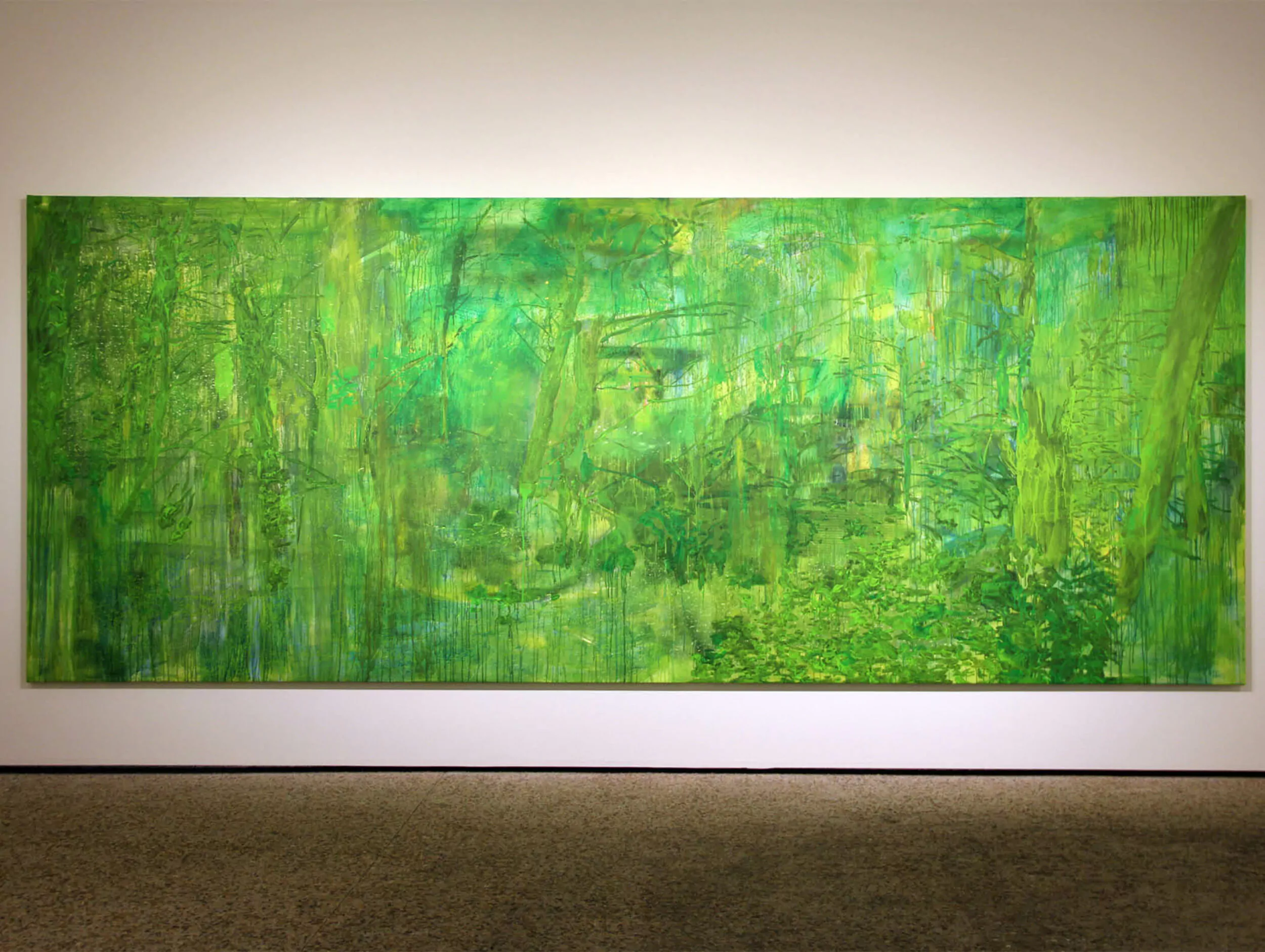Freedom.
Artist Stefan Peters (°1978, Hasselt) has a particular fascination for the language of paint and the essence of painting. For years he has been unveiling his own imagery in order to penetrate ever more deeply in the reality and his surroundings. And often we see the landscape emerging, in mountains and valleys, dense forests and shrubberies, panoramas with hiking trails along which one can get lost.
With the exposition ‘Locus Amoenus’, Stefan Peters is the first artist to be invited in the new meeting place ‘Brousse’ in Hasselt, which has just been established by UAU Collectiv. And where this house of architects, designers and artists wants to be a world for wonder and imagination, the idea of wilderness, the idea of a tropical location is brought closer for a little while. The brousse, after all, is not a remote jungle here, but a nearby, accessible environment where contemporary visual art gets a central position. A place one can return to over and over again.
The title ‘Locus Amoenus’ refers to the description of an idealised sanctuary in nature. It usually involves a beautiful, shaded meadow or a forest with a babbling brook surround by colourful birds and flowers. It is a lovely environment, an idyllic summery picture where lovers can meet or where you can be on your own for a moment. It is a safe place that you can escape to or long for, such as Arcadia or the Garden of Eden. It would give you the opportunity to leave behind your everyday concerns and take the time to muse and to dream. A contrast with the bustling city. An escapade far away from the routine. An accommodation against mortality. Freedom.
Stefan Peters
According to Stefan Peters, the significance of painting is inextricably connected with the meaning of life and the puniness of our existence. Fired by a fixed fascination with the language of painting, Peters has for some years been aspiring to fathom reality by disclosing the mechanics of representation. How and to what extent does the medium’s long tradition provide a response to the complexity of contemporary reality?
The artist makes uses of rhetorical devices such as reversals, mirror imaging and cutting to undermine the elegance of his painting technique. This results in scenes characterised by fairy-like as well as apocalyptic elements. Using indirect lighting, scenic shadows and brush strokes that refuse to take on any descriptive function, Peters dissects what is familiar to us. What he depicts evokes Edward Snowden, inadvertently stumbling onto ‘The Truman Show’ – a scene that elicits the question: ‘Was nothing real?’
The artist meditates in paint while searching for a principle – which increasingly turns out to be the simplicity of a brush stroke or even of a blank space. In the end, Stefan Peters creates visual vortexes. Though there’s always ineluctably something off-kilter about his illusory constructions, they invariably exert a fatal attraction on the viewer.
Stef Van Bellingen
picture © Alessandra Ruyten










